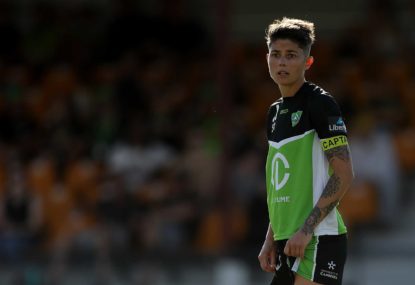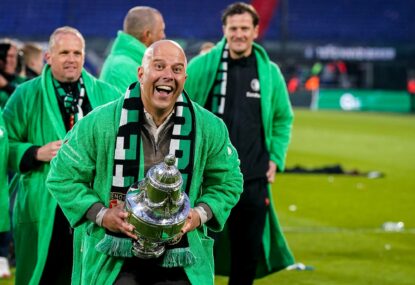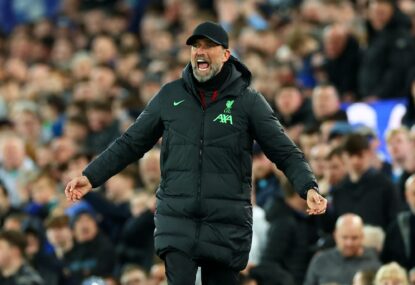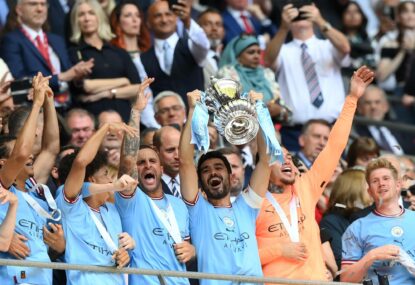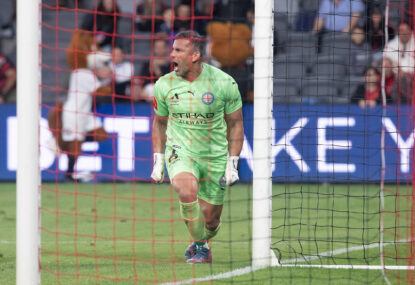As A-League clubs start investing more in their women’s programs, there is every chance that traditional powerhouse Canberra United will start to fall behind.
Canberra have punched above their weight since they were formed in 2008, with nine finals appearances in 13 seasons, three Premiers Plates and two W-League Championships.
The club has also produced several Matildas over their journey. The likes of Michelle Heyman, Ellie Carpenter and Karly Roestbakken to name only a few have all gone through the Canberra United system.
The Canberra United Academy was also set up in 2016 to represent the Capital Football High Performance Program, aligned with the FFA national technical strategy, catering for players from the ACT and the surrounding region. The girls program started at under-10s.
Run by Capital Football, with a controlling interest from Football Australia, United’s financial position is interesting. As a club they have lost money but are still backed by Capital Football, who are in a relatively strong position.
Canberra United lost $53,945 in the year ending 31 December 2020, understandable considering COVID had an impact. In 2019, though, long before anyone had heard of COVID, the club lost $114,325 in the year ending 31 December 2019. They lost $26,635 in 2018 and $112,582 in 2017.
Capital Football’s financial position is relatively strong, with net assets of $3.5 million in the year ended 31 December 2020. This is a sound financial base, meaning for the short term at least it is sustainable to fund Canberra United.
The reality is, though, no entity wants to lose money. Canberra’s crowds are relatively strong compared to the rest of the A-League Women’s supporter base, but still low when trying to operate a professional sporting club.
They have a passionate and vocal group of fans that turn up to Viking Park. McKellar Park, their traditional home ground, closed in 2020 due to COVID.
However the crowd numbers at either ground aren’t great. The average crowd has been around 1200 over the past few years. This is not sustainable for a club that will be competing against A-League clubs bankrolled by billionaires.
While cynics would argue many of these billionaires have invested little in their women’s programs, after the 2023 World Cup, women’s football will thrive at least for the short term. Whether Capital Football will match A-League club owners in their investment is another story.
The likes of Melbourne City, Sydney FC, Western Sydney Wanderers have outstanding facilities for their women.

(Photo by Ashley Feder/Getty Images)
United currently do strength and conditioning at the excellent AIS. They did previously use the AIS pitches for training, but now due to their sponsorship with University of Canberra, they train at the fields there which have been described as a ‘cow paddock’ by some. The change rooms are the public university change rooms, which were modified for the club’s needs.
While Canberra’s facilities can be described as sound, they are a bit outdated compared to the multi-million dollar facilities the likes of City, Sydney FC and the Wanderers have. This includes female-specific change rooms and facilities that cater for women’s football. As time goes on, this disparity for Canberra United will only get bigger.
The newly independent APL controls the A-League Mens and Womens competitions now. The 12 A-League clubs each have a share. Canberra United isn’t part of this.
The APL is valued at $425 million. SilverLake, the American equity firm, recently invested $140 million to take a one-third share.
While Canberra will benefit from any investment in the A-League Womens, their ability to compete with the other 12 cashed up clubs will be challenging. Central Coast, Western United and Macarthur are due to join the competition in the next two years.
This will make it challenging for Canberra to recruit the best talent available. This will make it harder to succeed which impacts crowds, sponsors and perhaps an appetite from Capital Football to invest more.
Canberra in 2021-22 are struggling, on and off the field. Last night’s 3-0 loss to Wellington Phoenix leaves Vicki Linton’s team second bottom.
Former CEO Phil Brown left last December after being on stress leave. There have also been other key departures including Technical Director Scott O’Donnell and highly respected physio Sarah Kelly.
Kelly’s departure has been felt by the playing group, and the injuries at the club since her departure have only magnified her absence.
Capital Football recently announced Chris Gardiner as interim CEO, and his role will involve working with Canberra United. This is a temporary position though.
Prominent figures like Lawrie McKinna have declined roles at Capital Football and consequently Canberra United, indicating there will be challenges to get the best available to make the trip down the Federal Highway.
Canberra as a region have long held a desire to have an A-League Men’s team, however, the reality of this happening isn’t clear. While football fans have asked for it, word down in Canberra is the corporate support may not be there and this reality is several years away.
Whether having a men’s team would help the women’s brand may be a point of controversy, but the reality is, having an A-League Men’s team would bring in money. A Canberra men’s team would likely be a privately owned entity. Whether Capital Football sell or pass on the women’s club would be interesting. There may be a collaboration instead. Whatever the model chosen – if it eventuates – will be fascinating to see.
Canberra United are a club who play a significant part in the women’s football landscape. Their legacy in Australian football is well respected. But important decisions need to be made about the future.






























































































